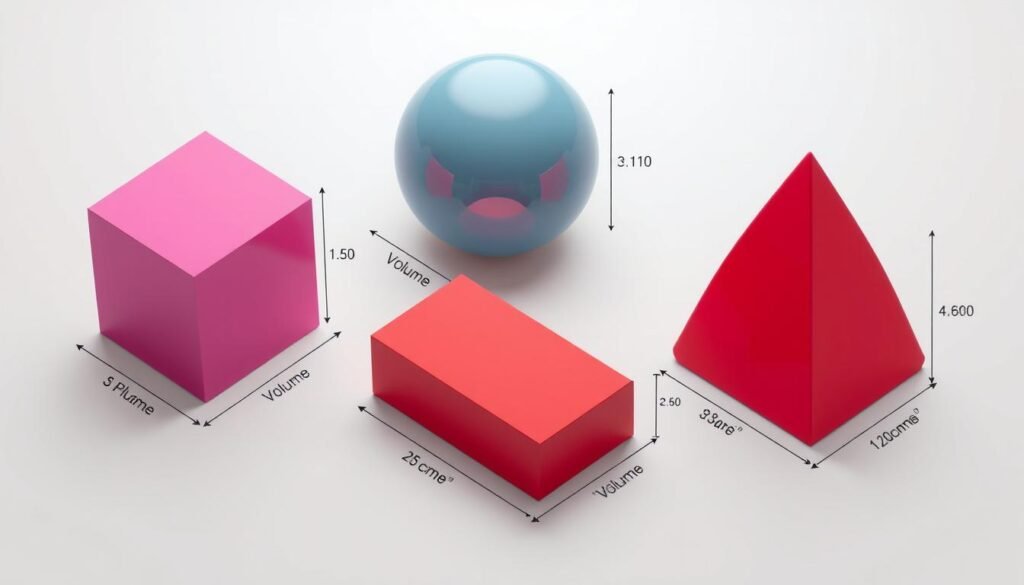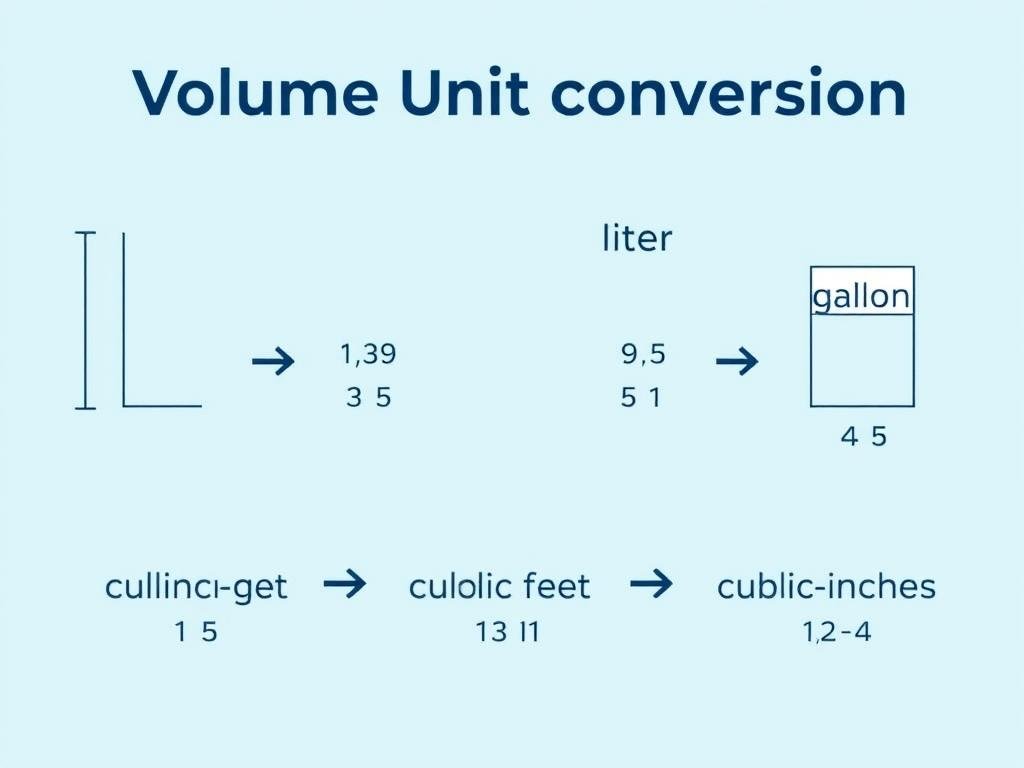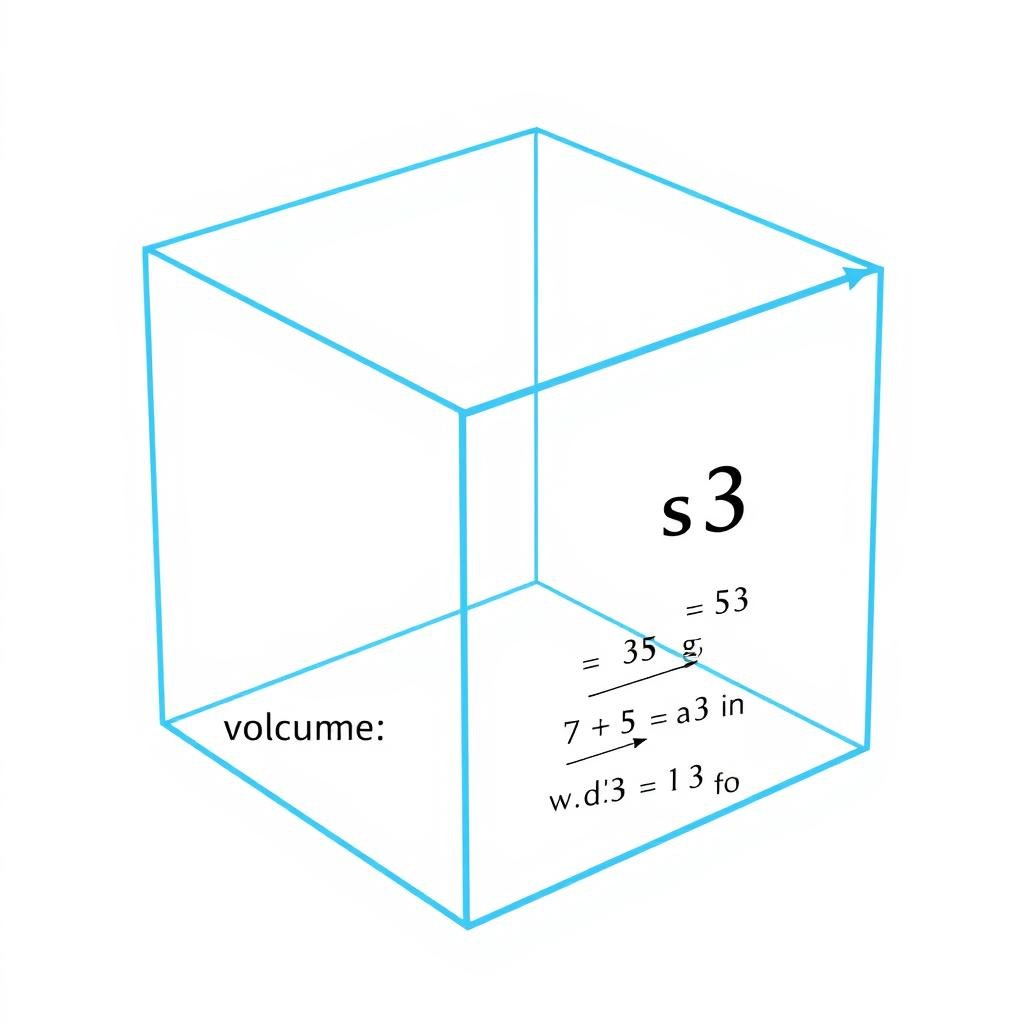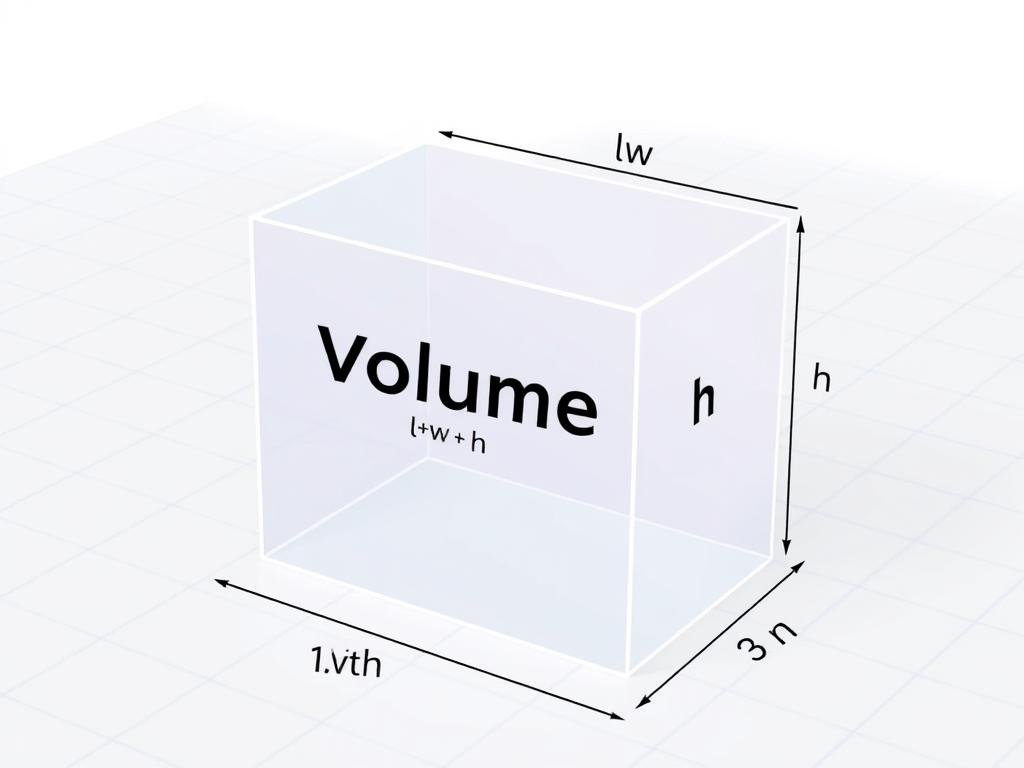Volume Calculator helps you quickly find the volume of cubes, spheres, cylinders, and more. Easy, accurate tool for math, science, and geometry.
Volume Calculator
Understanding how to calculate volume is essential in numerous fields, from construction and engineering to cooking and science. Volume represents the three-dimensional space occupied by an object, measured in cubic units. Whether you're determining how much concrete you need for a project, calculating the capacity of a container, or solving academic problems, mastering volume calculations is a valuable skill. This comprehensive guide explains volume formulas for common 3D shapes, provides step-by-step examples, and offers practical applications to help you perform accurate volume calculations.

What is Volume? Understanding the Basics
Volume is the amount of three-dimensional space occupied by a substance or object. Unlike area, which measures two-dimensional space, volume accounts for all three dimensions. The SI unit for volume is the cubic meter (m³), though other common units include cubic centimeters (cm³), cubic inches (in³), cubic feet (ft³), liters (L), and gallons (gal).
When calculating volume, you'll need to identify the shape of the object and apply the appropriate formula. Each 3D shape has a specific formula based on its geometric properties. Understanding these formulas is crucial for accurate volume calculations in real-world applications.
Need Quick Volume Calculations?
Skip the manual calculations and get instant, accurate results for any 3D shape.
Volume Units and Conversion
Before diving into volume calculations, it's important to understand the various units used to measure volume and how to convert between them.
| Unit | Symbol | Equivalent in Cubic Meters | Common Usage |
| Cubic Meter | m³ | 1 | Construction, large volumes |
| Cubic Centimeter | cm³ or mL | 0.000001 | Small measurements, medicine |
| Liter | L | 0.001 | Liquids, cooking |
| Cubic Foot | ft³ | 0.0283168 | Construction (US) |
| Cubic Inch | in³ | 0.0000164 | Small objects (US) |
| Gallon | gal | 0.003785 (US) | Liquids (US) |
When performing volume calculations, ensure all measurements use the same unit system to avoid errors. If dimensions are in different units, convert them to a common unit before applying volume formulas.

How to Calculate Cube Volume
A cube is a three-dimensional shape with six equal square faces. Calculating its volume is straightforward since all edges have the same length.
Cube Volume Formula
The volume of a cube is calculated using the formula:
Volume = s³
Where s is the length of any edge of the cube.
Step-by-Step Example:
- Identify the length of one edge of the cube
- Cube this value (multiply it by itself three times)
- Express the result in cubic units
Example: Calculate the volume of a cube with edges of 5 inches.
Volume = 5³ = 5 × 5 × 5 = 125 cubic inches (in³)

Rectangular Prism (Box) Volume Calculation
A rectangular prism, commonly called a box, has six rectangular faces. Unlike a cube, its length, width, and height can all be different.

Rectangular Prism Volume Formula
The volume of a rectangular prism is calculated using:
Volume = length × width × height
Or simply: V = l × w × h
Step-by-Step Example:
- Measure the length, width, and height of the rectangular prism
- Multiply these three values together
- Express the result in cubic units
Example: Find the volume of a rectangular box with length 8 cm, width 4 cm, and height 3 cm.
Volume = 8 × 4 × 3 = 96 cubic centimeters (cm³)
Working with Complex Measurements?
Get precise volume calculations for any rectangular prism instantly.
Cylinder Volume Calculation
A cylinder is a three-dimensional shape with two parallel circular bases connected by a curved surface. Common examples include pipes, cans, and tanks.
Cylinder Volume Formula
The volume of a cylinder is calculated using:
Volume = π × r² × h
Where r is the radius of the circular base and h is the height of the cylinder.
Step-by-Step Example:
- Measure the radius of the circular base (or divide the diameter by 2)
- Square the radius value
- Multiply by π (approximately 3.14159)
- Multiply by the height of the cylinder
- Express the result in cubic units
Example: Calculate the volume of a cylinder with radius 3 feet and height 7 feet.
Volume = π × 3² × 7 = 3.14159 × 9 × 7 ≈ 197.92 cubic feet (ft³)

Sphere Volume Calculation
A sphere is a perfectly round three-dimensional object where every point on its surface is equidistant from its center. Examples include balls, planets, and bubbles.

Sphere Volume Formula
The volume of a sphere is calculated using:
Volume = (4/3) × π × r³
Where r is the radius of the sphere.
Step-by-Step Example:
- Measure the radius of the sphere (or divide the diameter by 2)
- Cube the radius value (multiply it by itself three times)
- Multiply by π (approximately 3.14159)
- Multiply by 4/3
- Express the result in cubic units
Example: Find the volume of a sphere with radius 5 meters.
Volume = (4/3) × π × 5³ = (4/3) × 3.14159 × 125 ≈ 523.6 cubic meters (m³)
Cone Volume Calculation
A cone is a three-dimensional geometric shape that tapers smoothly from a flat, circular base to a point called the apex or vertex.
Cone Volume Formula
The volume of a cone is calculated using:
Volume = (1/3) × π × r² × h
Where r is the radius of the circular base and h is the height of the cone (perpendicular distance from the base to the apex).
Step-by-Step Example:
- Measure the radius of the circular base
- Square the radius value
- Multiply by π (approximately 3.14159)
- Multiply by the height of the cone
- Divide by 3
- Express the result in cubic units
Example: Calculate the volume of a cone with radius 4 inches and height 9 inches.
Volume = (1/3) × π × 4² × 9 = (1/3) × 3.14159 × 16 × 9 ≈ 150.8 cubic inches (in³)

Pyramid Volume Calculation
A pyramid is a three-dimensional shape with a polygonal base and triangular faces that meet at a point called the apex. The most common type is a square pyramid with a square base.

Pyramid Volume Formula
The volume of any pyramid is calculated using:
Volume = (1/3) × base area × height
For a square pyramid: Volume = (1/3) × a² × h
Where a is the length of the base edge and h is the height of the pyramid.
Step-by-Step Example:
- Calculate the area of the base (for a square base, area = a²)
- Multiply by the height of the pyramid
- Divide by 3
- Express the result in cubic units
Example: Find the volume of a square pyramid with base edge 6 meters and height 8 meters.
Volume = (1/3) × 6² × 8 = (1/3) × 36 × 8 = 96 cubic meters (m³)
Practical Applications of Volume Calculations
Volume calculations have numerous real-world applications across various fields. Understanding how to calculate volume accurately can help you solve practical problems in everyday life and professional settings.
Construction

- Calculating concrete needed for foundations
- Determining soil volume for excavation
- Measuring gravel required for driveways
Home & Kitchen

- Converting recipe measurements
- Calculating storage container capacity
- Determining swimming pool water volume
Science & Industry

- Measuring chemical solutions
- Calculating shipping container capacity
- Determining product packaging volume
Need Volume Calculations for Your Project?
Our volume calculator handles all these applications and more with precision and ease.
Tips for Accurate Volume Measurements
Achieving accurate volume calculations requires attention to detail and proper measurement techniques. Here are some essential tips to ensure your volume calculations are precise:
Measurement Best Practices
- Always use the same unit system throughout your calculations
- Measure dimensions at their widest points for irregular objects
- Use appropriate measuring tools for the size of the object
- Take multiple measurements and average them for greater accuracy
- Account for any internal structures that might reduce volume
- Round final answers appropriately based on the precision needed
Common Measurement Errors
- Mixing different unit systems (metric and imperial)
- Confusing diameter with radius in circular measurements
- Forgetting to convert linear measurements to cubic units
- Measuring irregular objects incorrectly
- Using worn or improperly calibrated measuring tools
- Applying the wrong formula for a particular shape

Frequently Asked Questions About Volume Calculations
What is the difference between volume and capacity?
While often used interchangeably, volume refers to the amount of space occupied by an object, while capacity refers to how much a container can hold. For example, a bottle has both a volume (the space its material occupies) and a capacity (how much liquid it can contain).
How do I calculate the volume of an irregular object?
For irregular objects, you can use the water displacement method: fill a graduated container with water, note the volume, submerge the object completely, and measure the new water level. The difference between the two measurements equals the object's volume.
Why is volume measured in cubic units?
Volume is measured in cubic units because it represents three-dimensional space. Each dimension (length, width, and height) is measured in linear units, and when multiplied together, they produce cubic units (e.g., cubic meters, cubic feet).
How do I convert between different volume units?
To convert between volume units, multiply by the appropriate conversion factor. For example, to convert from cubic inches to cubic feet, divide by 1,728 (since 1 ft³ = 12³ in³). For liquid measures, remember that 1 liter = 1,000 milliliters = 0.001 cubic meters.
Can volume be negative?
No, volume cannot be negative in physical reality. Volume represents the amount of space occupied by an object, which is always a positive quantity. Negative values might appear in calculations but don't represent physical volumes.
Conclusion: Mastering Volume Calculations
Understanding how to calculate the volume of different 3D shapes is a valuable skill with applications across numerous fields. From construction and engineering to cooking and science, volume calculations help us determine quantities, plan projects, and solve everyday problems.
By mastering the formulas for common shapes like cubes, rectangular prisms, cylinders, spheres, cones, and pyramids, you can confidently tackle volume-related challenges. Remember to maintain consistent units throughout your calculations and apply the appropriate formula for each shape.
While manual calculations are educational and sometimes necessary, using a dedicated volume calculator can save time and reduce errors, especially for complex shapes or when precision is critical.
Ready to Calculate Volume Effortlessly?
Our volume calculator handles all common 3D shapes with precision and ease. Simply enter your measurements and get instant, accurate results.